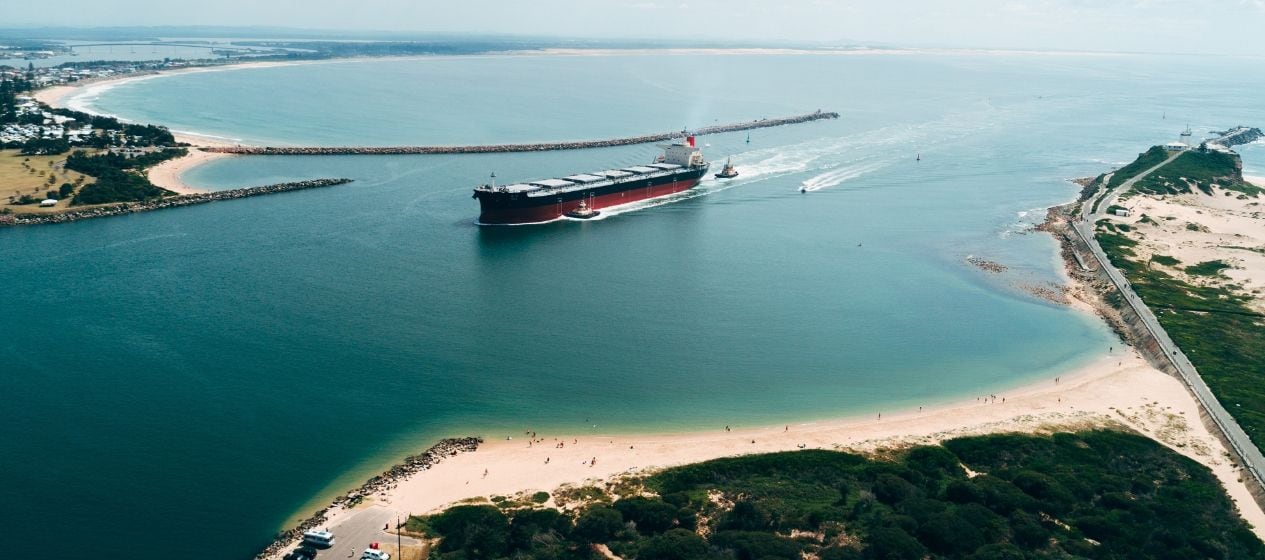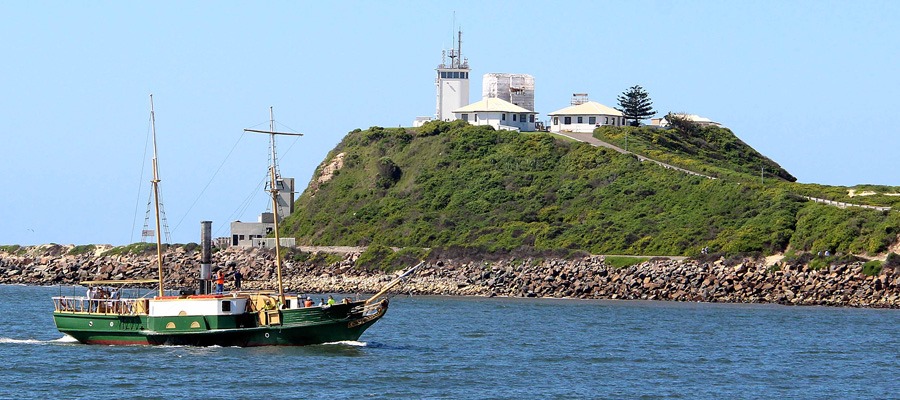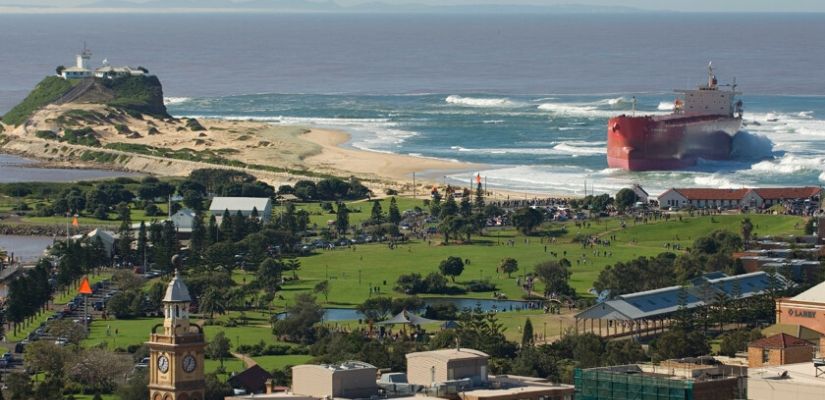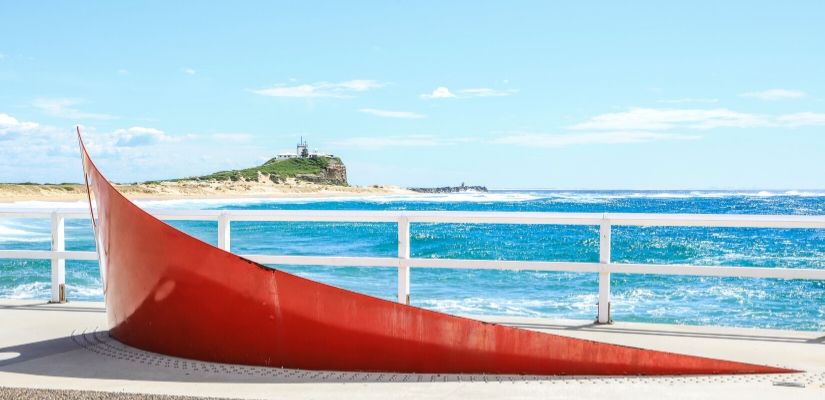Sailors and shipwrecks
Newcastle was once a convict town only accessible by boat. Later sailors, bootleggers, shipping agents and merchants roamed the fledgling port town while a graveyard of shipwrecks littered the harbour entrance.
Dive into Newcastle’s rich maritime history:
The Shipwreck Walk
The fascinating Shipwreck Walk along the Stockton breakwall allows visitors to see Newcastle from a different perspective as you look back across the harbour.
Along the 2km return walk you’ll see markers with the names of many ships that came to tragedy on the Oyster Bank, a sandbank at the entrance to the Hunter River. This notorious section saw scores of ship wrecks before the construction of breakwalls on either side of the harbour.
You can even stand over the wreck of the French four-masted barque Adolphe from a viewing platform. The account of the wreck is a story of the courageous and skillful work of the lifeboat crew who saved every life on board.
*Did you know: The Port of Newcastle’s dredge, the David Allan, operates 12 hours per day, seven days a week to ensure vessel safety (i.e. no more shipwrecks!) in the harbour’s commercial shipping channel.
Newcastle Port

If Newcastle had a sound track it would be the blast of a ship’s horn.
With a history stretching back more than two centuries, Newcastle Port has been trading coal ever since the first commercial shipment was made in 1799.
Run by the Port of Newcastle, it’s the biggest port on Australia’s east coast. It bustles with ferries, yachts, tug boats and freighters. The port currently handles 4,400 ship movements and 164 million tonnes of cargo annually.
*One of the best places to watch ships enter port is Newcastle Breakwall on Macquarie Pier, recently given a multi-million dollar makeover. The Macquarie Pier (locals simply call it the breakwall) is a great place to see the comings and goings of the working port and connect with the city’s maritime heritage.
Want to be a ship spotter? Check out the shipping arrival and departure times
William the Fourth

Step back in time aboard William the Fourth an operational replica of Australia’s first steam powered ocean-going paddlewheel ship.
Built in 1831, the ship operated between Sydney and the growing settlement inland from the ‘Green Hills’ now known as Morpeth. At the time there were almost no roads in the fledgling colony and a graveyard of shipwrecks at the entrance to Newcastle Harbour is evidence of the many hazards pioneers faced.
The ship was a general carrier, transporting produce to the markets in Sydney and products the settlers needed to live in the valley.
Docked in Newcastle Harbour, William the Fourth is testament to the region’s tough pioneering and maritime heritage.
Today you can book a morning tea or history cruise aboard the vessel moored in Newcastle Harbour.
Boatmen's Row
In Newcastle’s historic east end is a row of heritage listed terraces once home to the crew of pilot boats in the Port of Newcastle. ‘Commonly known as ‘Boatmen’s Row’ the terraces along Nobbys Rd were built to house the 22 boatmen who also served on lifeboats to assist ships in distress.
As the boatmen were required to live close to the Pilot Station and the lifeboat, accommodation was built for them close to the foreshore. The four-storey terrace homes are now privately owned.
Watt St Admirals
Take a stroll up Watt Street – Newcastle’s oldest street, once the epicentre of the city’s shipping industry.
In its heyday, 12 shipping agents had their offices in Watt Street and hotels and clubs lining the street were the watering holes of the “Watt Street Admirals”.
Today only the 1930s art deco Union Steam Ship Company building at number 31 Watt Street survives. The heritage-listed building still emblazoned with the company name features striking art deco lines, etched glass entry doors and the coat of arms above the doorway.
The Pasha Bulker

On June 8 2007 the coal ship Pasha Bulker ran aground on Nobbys Beach making headlines around the globe.
The 76,000-tonne bulk carrier was stranded off Newcastle’s Nobbys Beach as Australia was lashed by five east coast lows – the most significant of which is now referred to as the “Pasha Bulker” storm.
Part of the Pasha Bulker's rudder which broke off during the salvage operation is now a beachside sculpture at the site of the grounding. The giant 19 tonne rudder snapped off on a rock reef and was later recovered from the sea bed.

Aptly titled ‘Grounded’, the bright red sculpture by renowned Sydney-based artist John Petrie represents the ship’s bow. It’s the perfect vantage spot to photograph Nobbys Beach and Nobbys Lighthouse.






